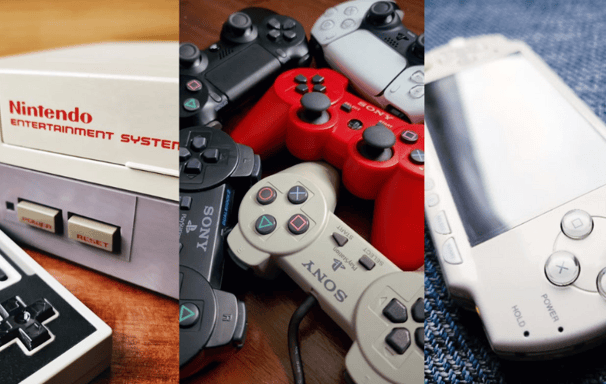How the Nintendo Entertainment System Saved the Video Game Industry
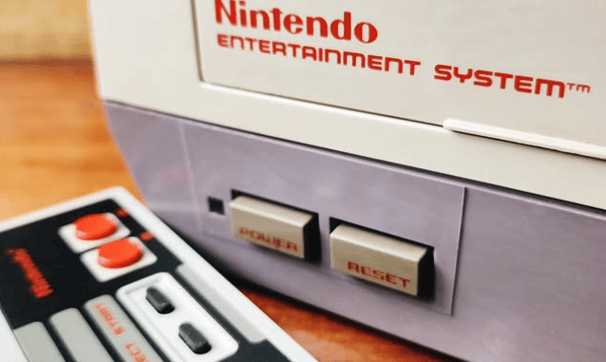

Innovation is taking two things that already exist and putting them together in a new way.
-Tom Freston
The Collapse of the Video Game Industry
By the early 1980s, the video game industry was in free fall. What started as a booming business in the late 1970s, led by Atari and home consoles, had turned into chaos by 1983. The industry was flooded with low-quality, rushed games, and consumer trust was shattered. One of the biggest disasters was E.T. the Extra-Terrestrial for the Atari 2600, a game so poorly received that millions of unsold cartridges were buried in a landfill.
Retailers lost faith in video games, and consoles that once sold in the millions suddenly saw demand plummet. The market had become oversaturated with too many systems, too many bad games, and no quality control. The video game crash of 1983 caused several companies to shut down, and many believed the industry was just a passing trend—one that had come to an end.
But one company saw an opportunity to turn things around.
The Birth of the Famicom
Nintendo, originally a playing card company, was not new to video games, having already released arcade hits like Donkey Kong. In 1983, while the North American industry was collapsing, Nintendo launched the Family Computer (Famicom) in Japan. Unlike the outdated and clunky home consoles available at the time, the Famicom featured:
Better graphics and sound than competitors
A growing library of games, including popular titles like Donkey Kong and early hits that set the stage for future classics
Cartridges equipped with memory management controllers (MMCs), allowing for larger, more complex games with improved graphics and gameplay mechanics
The Famicom was an instant success in Japan, selling millions of units within its first few years. Seeing this, Nintendo set its sights on the US market, but there was a massive challenge ahead—convincing American retailers and consumers to give video games another chance.
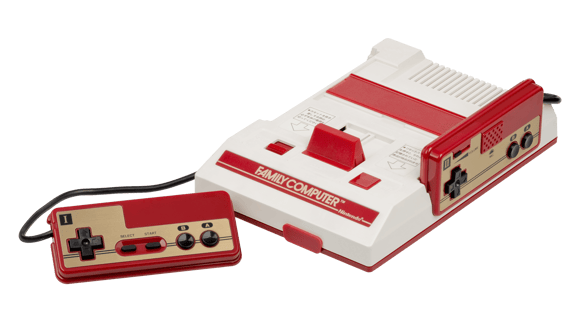

Famicom, Nintendo (1983)
The Challenge: Breaking into a Dead Market
By 1985, video games were seen as a failed industry in the United States. Retailers refused to stock gaming consoles, believing they wouldn’t sell, and the term “video game” had become toxic. Many of the biggest toy stores, including Toys “R” Us and KB Toys, were hesitant to take on another system after the disaster of Atari, Coleco, and Mattel’s failures.
Nintendo knew that simply releasing the Famicom in the U.S. wouldn’t work—they needed to completely rebrand it. Instead of selling it as a “video game console,” they marketed it as an entertainment system to distance it from the failed systems of the past.
Nintendo’s Marketing Strategy: A Genius Rebrand
1. The “Nintendo Entertainment System” Rebrand
Nintendo redesigned the Famicom into the Nintendo Entertainment System (NES), giving it a sleek, gray, boxy design that looked more like a VCR than a toy. The idea was to make it seem like a high-tech home entertainment device, not just another gaming console.
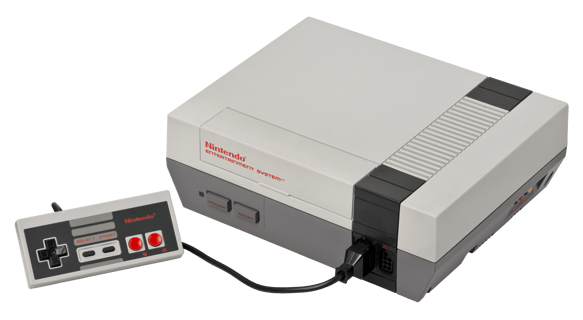

Nintendo Entertainment System, Nintendo (1985)
2. The R.O.B. Gimmick
To further separate the NES from failed consoles, Nintendo introduced R.O.B. (Robotic Operating Buddy). This small toy robot was included in early bundles to make the NES seem like a high-tech gadget rather than a game console. Though R.O.B. didn’t have much practical use, it successfully convinced retailers that the NES was different from Atari.
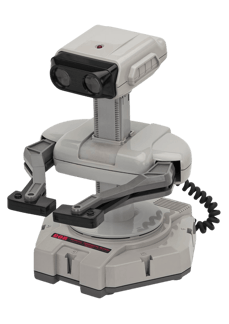

R.O.B. (Robotic Operating Buddy)
3. The New York City Test Launch
Instead of a nationwide release, Nintendo took a calculated risk by launching the NES exclusively in New York City in 1985. They focused on getting it into toy stores, electronics stores, and department stores, relying on aggressive in-store demonstrations to show off the console’s quality.
Nintendo reps set up demo kiosks where people could try Super Mario Bros.
Retailers were given a no-risk deal—they only paid for the NES if it sold
Word-of-mouth marketing spread as kids and parents saw the system in action
The gamble worked. Sales in New York were strong enough to expand the launch across the U.S. in 1986.
How the NES Revived the Gaming Industry
Once the NES was fully released, Nintendo’s strategy was meticulous and groundbreaking, ensuring that their console wouldn’t suffer the same fate as Atari. They introduced several key policies that reshaped the industry:
1. Strict Quality Control & The Nintendo Seal of Quality
One of the biggest reasons for the crash was low-quality games flooding the market. To fix this, Nintendo introduced the Nintendo Seal of Quality, ensuring that only approved, polished games could be released on the NES. This meant:
No more rushed, broken games
A higher standard for game development
Consumers could trust that an NES game was worth their money
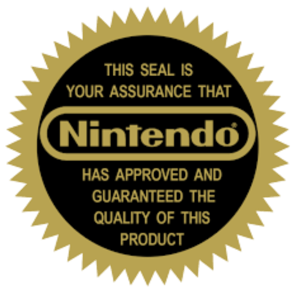

Nintendo Seal of Quality
2. Exclusive Third-Party Partnerships
Nintendo locked in major developers like Capcom, Konami, and Square into exclusive contracts, ensuring that the best games were only on the NES. This move prevented competitors like Atari and Sega from securing top-tier games, helping Nintendo dominate the market.
3. The Power of Super Mario Bros. and Killer Games
When the NES launched, it came with a game that would change gaming forever—Super Mario Bros.
This title:
Set a new standard for platformers
Showcased the NES’s superior graphics and gameplay
Became an instant classic, selling over 40 million copies
Alongside other hits like The Legend of Zelda, Mega Man, and Metroid, the NES’s game library blew the competition out of the water.
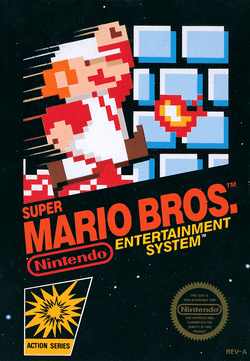

Super Mario Bros, NES Cover Art
The NES’s Lasting Impact on Gaming
By 1990, the NES had cemented itself as the king of home gaming. It didn’t just sell well—it completely changed how the industry worked. Nintendo single-handedly rebuilt consumer trust and established gaming as a serious, long-term entertainment medium.
Some of the NES’s biggest contributions include:
The start of legendary franchises (Mario, Zelda, Metroid)
The rise of game developers like Capcom and Square Enix
Shaping modern game design, from side-scrollers to RPGs
Creating a lasting gaming culture, with magazines (Nintendo Power), cartoons, and tournaments
By the time the NES was discontinued in 1995, it had sold over 61 million units, paving the way for future consoles like the Super Nintendo, PlayStation, and beyond.
The video game industry was on the verge of death, but the NES didn’t just revive it—it set the blueprint for gaming’s future. Without the NES, the industry as we know it today might not exist at all.
From its clever marketing to its legendary game library, the NES proved that gaming wasn’t a dying fad—it was here to stay.
Looking for more on gaming history? Explore deeper dives into the legacy of retro classics right here on Raised by Retro. And don’t forget to follow our official social media partner, The Console Quest for daily retro gaming content.
The Collapse of the Video Game Industry
By the early 1980s, the video game industry was in free fall. What started as a booming business in the late 1970s, led by Atari and home consoles, had turned into chaos by 1983. The industry was flooded with low-quality, rushed games, and consumer trust was shattered. One of the biggest disasters was E.T. the Extra-Terrestrial for the Atari 2600, a game so poorly received that millions of unsold cartridges were buried in a landfill.
Retailers lost faith in video games, and consoles that once sold in the millions suddenly saw demand plummet. The market had become oversaturated with too many systems, too many bad games, and no quality control. The video game crash of 1983 caused several companies to shut down, and many believed the industry was just a passing trend—one that had come to an end.
But one company saw an opportunity to turn things around.
The Birth of the Famicom
Nintendo, originally a playing card company, was not new to video games, having already released arcade hits like Donkey Kong. In 1983, while the North American industry was collapsing, Nintendo launched the Family Computer (Famicom) in Japan. Unlike the outdated and clunky home consoles available at the time, the Famicom featured:
Better graphics and sound than competitors
A growing library of games, including popular titles like Donkey Kong and early hits that set the stage for future classics
Cartridges equipped with memory management controllers (MMCs), allowing for larger, more complex games with improved graphics and gameplay mechanics
The Famicom was an instant success in Japan, selling millions of units within its first few years. Seeing this, Nintendo set its sights on the US market, but there was a massive challenge ahead—convincing American retailers and consumers to give video games another chance.
The Challenge: Breaking into a Dead Market
By 1985, video games were seen as a failed industry in the United States. Retailers refused to stock gaming consoles, believing they wouldn’t sell, and the term “video game” had become toxic. Many of the biggest toy stores, including Toys “R” Us and KB Toys, were hesitant to take on another system after the disaster of Atari, Coleco, and Mattel’s failures.
Nintendo knew that simply releasing the Famicom in the U.S. wouldn’t work—they needed to completely rebrand it. Instead of selling it as a “video game console,” they marketed it as an entertainment system to distance it from the failed systems of the past.
Nintendo’s Marketing Strategy: A Genius Rebrand
1. The “Nintendo Entertainment System” Rebrand
Nintendo redesigned the Famicom into the Nintendo Entertainment System (NES), giving it a sleek, gray, boxy design that looked more like a VCR than a toy. The idea was to make it seem like a high-tech home entertainment device, not just another gaming console.
2. The R.O.B. Gimmick
To further separate the NES from failed consoles, Nintendo introduced R.O.B. (Robotic Operating Buddy). This small toy robot was included in early bundles to make the NES seem like a high-tech gadget rather than a game console. Though R.O.B. didn’t have much practical use, it successfully convinced retailers that the NES was different from Atari.
3. The New York City Test Launch
Instead of a nationwide release, Nintendo took a calculated risk by launching the NES exclusively in New York City in 1985. They focused on getting it into toy stores, electronics stores, and department stores, relying on aggressive in-store demonstrations to show off the console’s quality.
Nintendo reps set up demo kiosks where people could try Super Mario Bros.
Retailers were given a no-risk deal—they only paid for the NES if it sold
Word-of-mouth marketing spread as kids and parents saw the system in action
The gamble worked. Sales in New York were strong enough to expand the launch across the U.S. in 1986.
How the NES Revived the Gaming Industry
Once the NES was fully released, Nintendo’s strategy was meticulous and groundbreaking, ensuring that their console wouldn’t suffer the same fate as Atari. They introduced several key policies that reshaped the industry:
1. Strict Quality Control & The Nintendo Seal of Quality
One of the biggest reasons for the crash was low-quality games flooding the market. To fix this, Nintendo introduced the Nintendo Seal of Quality, ensuring that only approved, polished games could be released on the NES. This meant:
No more rushed, broken games
A higher standard for game development
Consumers could trust that an NES game was worth their money
2. Exclusive Third-Party Partnerships
Nintendo locked in major developers like Capcom, Konami, and Square into exclusive contracts, ensuring that the best games were only on the NES. This move prevented competitors like Atari and Sega from securing top-tier games, helping Nintendo dominate the market.
3. The Power of Super Mario Bros. and Killer Games
When the NES launched, it came with a game that would change gaming forever—Super Mario Bros.
This title:
Set a new standard for platformers
Showcased the NES’s superior graphics and gameplay
Became an instant classic, selling over 40 million copies
Alongside other hits like The Legend of Zelda, Mega Man, and Metroid, the NES’s game library blew the competition out of the water.


The NES’s Lasting Impact on Gaming
By 1990, the NES had cemented itself as the king of home gaming. It didn’t just sell well—it completely changed how the industry worked. Nintendo single-handedly rebuilt consumer trust and established gaming as a serious, long-term entertainment medium.
Some of the NES’s biggest contributions include:
The start of legendary franchises (Mario, Zelda, Metroid)
The rise of game developers like Capcom and Square Enix
Shaping modern game design, from side-scrollers to RPGs
Creating a lasting gaming culture, with magazines (Nintendo Power), cartoons, and tournaments
By the time the NES was discontinued in 1995, it had sold over 61 million units, paving the way for future consoles like the Super Nintendo, PlayStation, and beyond.
The video game industry was on the verge of death, but the NES didn’t just revive it—it set the blueprint for gaming’s future. Without the NES, the industry as we know it today might not exist at all.
From its clever marketing to its legendary game library, the NES proved that gaming wasn’t a dying fad—it was here to stay.
Looking for more on gaming history? Explore deeper dives into the legacy of retro classics right here on Raised by Retro. And don’t forget to follow our official social media partner, The Console Quest for daily retro gaming content.


Famicom, Nintendo (1983)


Nintendo Entertainment System, Nintendo (1985)


R.O.B. (Robotic Operating Buddy)


Nintendo Seal of Quality
Super Mario Bros, NES Cover Art
Related Stories
Join our retro gaming community and get weekly updates, deep dives, and hidden gems—straight to your inbox!
